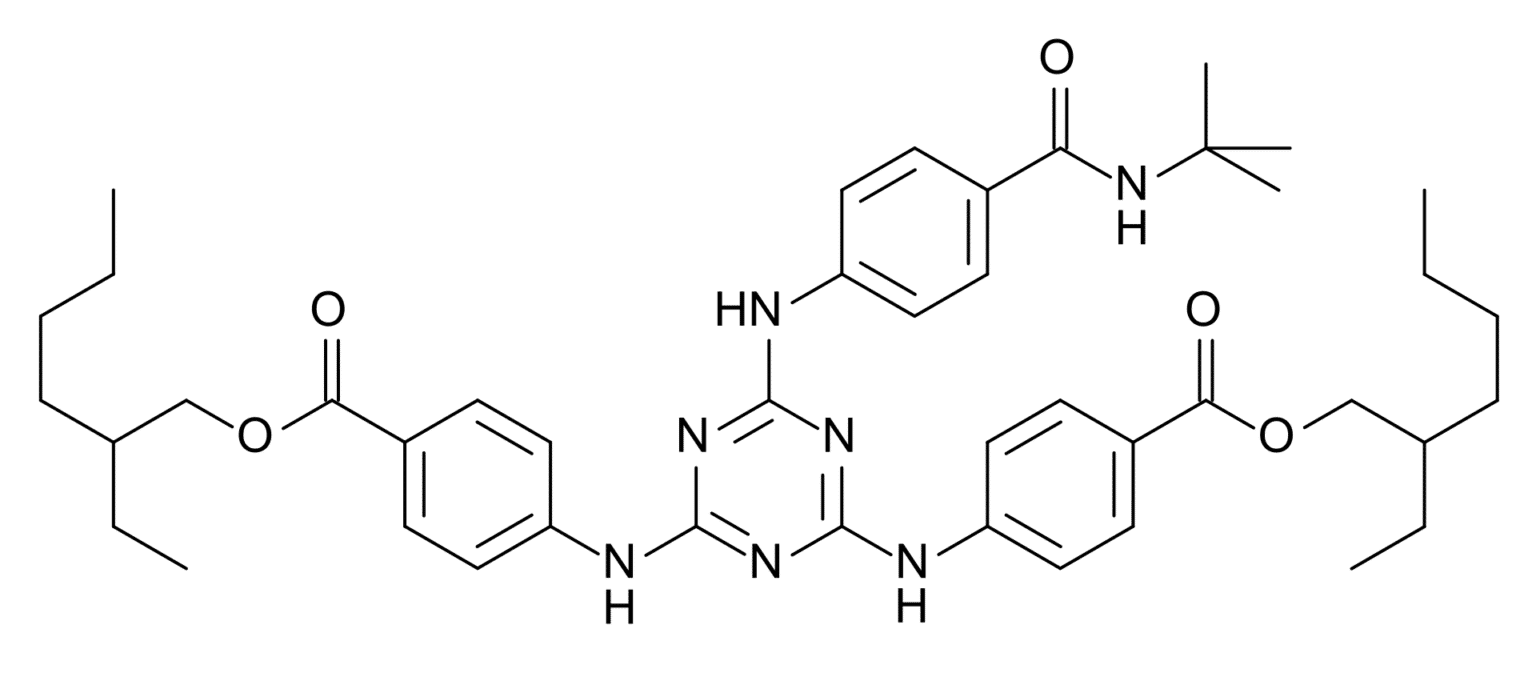Iscotrizinol (Diethylhexyl Butamido Triazone)

What Is Iscotrizinol?
Iscotrizinol, also known as Diethylhexyl Butamido Triazone, is a broad-spectrum chemical sunscreen filter from the triazine family. It protects against both UVB and UVA II radiation, with peak absorption at 310 nm. Approved in many countries outside the U.S., Iscotrizinol is favored for its exceptional photostability, oil solubility, and ability to contribute significantly to high SPF formulations even at low concentrations.
It may also be referred to as Uvasorb HEB.
How It Works
Iscotrizinol absorbs UVB and some UVA II rays and converts the energy into heat, preventing it from reaching the skin. It is one of the most photostable UV filters available, losing only about 10% of its SPF protection after 25 hours of sunlight exposure, far exceeding the typical benchmark of 2 hours.
Its oil-soluble nature makes it ideal for use in water-resistant sunscreens, while its ability to stabilize other UV filters makes it valuable in synergistic combinations. It is commonly used in emulsions, creams, lotions, gels, and even makeup products.
Key Specifications
- Structure: C₄₄H₅₉N₇O₅
- Chemical Class: Triazines
- IUPAC Name: 4,4’-[[6-[[4-[[(1,1-dimethylethyl)amino]carbonyl]phenyl]amino]-1,3,5-triazine-2,4-diyl]diimino]bis-, bis(2-ethylhexyl)benzoate
- Molecular Weight: 765.98 g/mol
- Solubility: Very soluble in oils and alcohols; insoluble in water
Protection Spectrum
- Mechanism of Action: Absorbs UVB and UVA II rays and converts them to heat
- UVB Protection: High (>85%)
- UVA I Protection: Low (<50%)
- UVA II Protection: Moderate (50–85%)
- HEV/Blue Light Protection: Low (<50%)
Side Effects and Safety Profile
Safety studies indicate that Iscotrizinol is non-irritating, non-sensitizing, and does not induce photosensitivity when used in sunscreen formulations up to 3%. It has not shown reproductive toxicity in animal studies and does not appear to interfere with fertility or development.
While environmental studies suggest it is extremely hazardous to aquatic ecosystems (water hazard class 3 under German classification), it remains approved for use in many global markets. It should not be released into water systems.
FDA GRASE Classification
- Classification: Non-GRASE (Category III)
Regulatory Status
- European Union, Asia, Australia, Mexico: Approved for use up to 10%
- Japan: Approved up to 5%
- United States: Not currently approved (pending further review)
